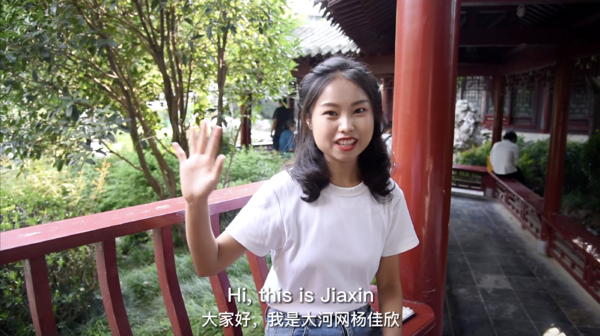Visit Henan, Explore China Episode II: Primitive Porcelain, Not Primitive at All
Editor's note: In a letter replying to senior experts at the National Museum of China on July 8, 2022, President Xi Jinping, also general secretary of the Communist Party of China Central Committee and chairman of the Central Military Commission, stressed firming up cultural confidence, preserving the fine accomplishments of Chinese civilization and using cultural relics to promote exchanges and mutual learning between civilizations. Henan, with the largest number of ancient kiln sites, has produced the most complete range of ceramic products in China. Generally speaking, the Henan-centered Chinese ceramic culture could be considered as one of the important cultural heritages nurtured by the Yellow River culture. Starting on August 2, we are launching the "Visit Henan, Explore China" series, featuring 6 short videos to help you catch a glimpse of wonderful Henan and brilliant Chinese civilization. Here is the second episode: Primitive Porcelain, Not Primitive at All.
编者按:2022年7月8日,习近平总书记在给中国国家博物馆老专家的回信中强调,推动文物活化利用,推进文明交流互鉴,守护好、传承好、展示好中华文明优秀成果。作为文物大省的河南,不仅是中国品种最全的陶瓷产区,而且还是拥有古陶瓷窑址数量最多的省份,可以说以河南为中心的中国陶瓷文化是黄河文化孕育出的重要文化遗产之一。2022年8月2日起,大河网推出6期双语特别报道——“在河南,遇见China”。让我们一起,通过陶瓷文化,“豫”见中华文明。今日推出第二期:《原始瓷,蕴藏的并非原始》。
Click on the video
NB: This is not a word-for-word transcript
In last episode, we learned the history of some beautiful painted pottery wares from the Yangshao Culture period. Today, let's go and have a look at Chinese primitive porcelain.
在上一期报道中,我们了解了优美而古朴的仰韶彩陶。今天,我们一起走进原始瓷的世界。

A screenshot from the video above
The slave society of China mainly refers to the periods of the Xia (21st-16th century BC), Shang (16th-11th century BC), Western Zhou (11th century-771 BC) and Spring and Autumn (770-476 BC, part of the period of Eastern Zhou lasting from 770-256 BC). From the 21st to the 5th century BC, China experienced great changes and laid a solid foundation for the later Iron Age with the appearance of China's first fully-developed characters, large-scale cities and earliest porcelain - primitive porcelain or proto-porcelain.
夏、商、周时期是中国的奴隶制社会时期,约自公元前21世纪至公元前5世纪。这一时期是中国历史上的大变革时期,上承新石器时代,下启铁器时代,不仅形成了成熟的文字体系和大型城址,还出现了中国瓷器的鼻祖——原始瓷。

A primitive porcelain of the Western Zhou Dynasty. [Photo/dahe.cn]
Primitive porcelain had been made and developed by pottery-making skills. At the sites of Shang Dynasty in Zhengzhou city, Henan province, archaeologists discovered a large number of glazed porcelain and their fragments, exquisite and hard, which were fired with a temperature above 1,000 degrees Celsius. As they were made by the primitive firing techniques, they are called primitive porcelain.
原始瓷是在制陶技术的基础上发展而来的。在河南郑州等地商代遗址,发现很多带釉的瓷尊、瓷罍和瓷罐等,以及这些器物的碎片,胎骨细腻坚硬,烧成温度在千度以上,叩之有金属声。因制作工艺原始,故被称为原始瓷。

A primitive porcelain of the Western Zhou Dynasty. [Photo/dahe.cn]
The picture above shows us a primitive porcelain of Western Zhou Dynasty, with a wide mouth, slender neck, sloping shoulder and looped bottom, which is a representative of primitive porcelain.
上图是一件西周时期的原始瓷,敞口、束颈、斜肩、圈足,是原始瓷的代表作之一。
The evolution from pottery to porcelain was a process in which the Chinese ancestors became familiar with the characteristics of water, fire and earth. First found at the Erlitou site in Luoyang city, primitive porcelain wares were still in use during the Shang and Zhou dynasties. Because of their hardness and jade-like glaze, primitive porcelain wares were usually made for the upper classes. Although the quality of primitive porcelain is inferior to the later mature porcelain, it is the Chinese nation's great contribution to the progress of human civilization.
由陶到瓷的漫长发展过程,是先民对水、火、土的特点不断熟悉的过程。原始瓷始见于二里头遗址中,至商、周时期仍有使用。原始瓷以其坚硬的胎质和光亮如玉的釉面而成为高规格的器物。原始瓷的质量虽然远不如后来成熟的瓷器,但却是中华民族为人类文明进步作出的重大贡献。

策划:王曦辉 张培君
文案:赵汉青
出镜:杨佳欣
制作:何蒙贺
审校:李文竞
Related Stories
相关阅读
Visit Henan, Explore China Episode III: China's Earliest White Porcelain Unearthed in Henan
Visit Henan, Explore China Episode IV: Sancai, a Mirror of Tang Dynasty
Visit Henan, Explore China Episode V: A 1,000-Year-Old Ru Porcelain Vase Still Wows the World Today
